

第二期主题为《Excel、Word,使用小“撇步”》,主讲人是信息科学与工程学院的党委副书记陈睿老师,曾获2019年上海市育才奖,2019届毕业生“我心目中的好老师”他从Excel和Word这两个常用办公软件入手,给大家提供了一系列实用的小技巧。
Excel快速填充01双击填充柄复制:在第一个单元格中输入信息,然后把鼠标移动到单元格右下角出现十字图标,双击,下面的每一个单元格就自动填充了同样信息:

或者选中需填充的单元格,在第一个单元格中输入信息,然后按Ctrl+Enter“文本”格式02Excel表格中有的时候数字的显示不正确,这是因为Excel自动对数字进行了科学计数和近似,在案例中可能就是学生的身份证号码出现了问题。
我们可以将单元格转换为“文本”的格式,就可以显示单元格文字本来的样子了。

方法一:在数字上面的操作栏里面改成“文本”格式,并更正为正确的数据,回车后显示就是正确的了:
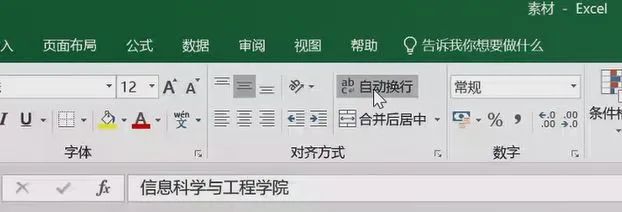
方法二:在单元格数据前面输入一个半角的单引号「’」,再更正数据:

单元格内换行:Alt+Enter03有的时候单元格内容很长,一行无法显示完全。我们可以通过自动换行的方式,让内容分行显示:

这个自动的换行是根据单元格长度进行的,如果我们要主动换,可以用Alt+Enter在单元格内主动换行。例如,我们在单元格里“信息”后换行:
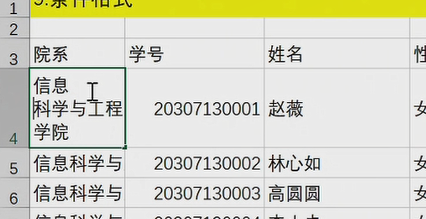
重复前一步操作:F404日常工作中我们经常有一些重复的操作。这时候可以按下F4快捷键,对选定的目标重复前一步操作。快速插入多行05如果我们要在表格中插入多行。可以选中多行,右键插入,就可以插入多行:
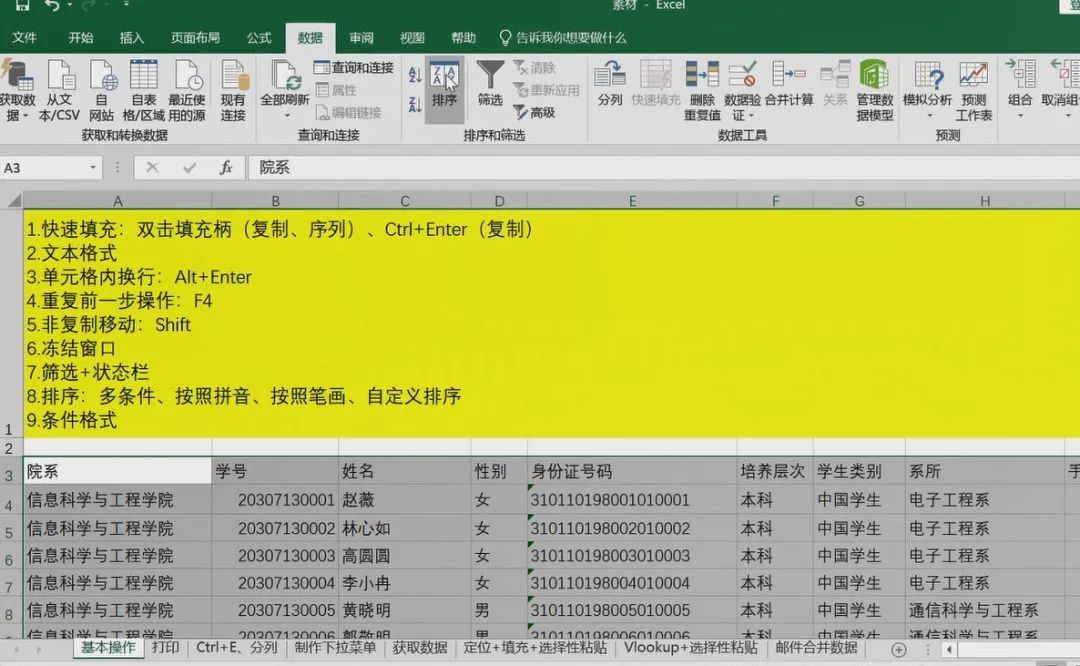
非复制移动06方法一:选中要移动的一行,Ctrl+X剪切,再粘贴到我们要去的地方方法二:或者选中这一行,按住Shift,可以用鼠标拖动到位置冻结窗口07有的时候数据太多在一页上显示不全,滑动的时候看不到前面的内容。
可以使用冻结窗格,这样在移动滚动条的时候就可以保持一些行或者列不动用鼠标选中,然后在上方菜单中选择冻结窗格:

筛选与状态栏08Excel窗口下方显示“就绪”的地方是状态栏,我们往往可以在这里得到一些信息。比如求和的数据等。例如搜索某一个信息,状态栏里显示找到的多少个就是表格中有多少含有这个信息的单元格:

排序09选中整张数据表,“数据”中有“排序”:

勾选“数据包含标题”,就能从选中的表格标题中进行选择排序的条件:

通过选择“主要关键字”和“次要关键字”可以同时使用多个条件进行排序:

通常排序往往是根据字母、数字等,比如名字会按照拼音首字母排序。Excel中也可以根据笔画数来排序。选中整张数据表,排序中可以选择按照笔画排序:

Excel中还提供了自定义排序方式。比如我们可以自己定义不同院系的顺序,设置完成后表格就可以按照我们设置的方式进行自定义排序:


条件格式10当我们想看看表格中有无重复的时候,我们可以选择条件格式。选中这一列,“开始”——“条件格式”——“突出显示规则”——“重复值”,就可以看到重复的一项被标色了:

打印设置11在“文件”中选择“打印”。我们可以看到即将打印的文件预览。打印顶端标题行:我们可以设置打印表格的顶端标题行,打印的时候每一页都会的第一行自动出现这一行,而不用我们重复输入:

打印区域:选中表格中我们想打印的区域,在打印的设置中选择“打印选定区域”,打印的范围就只有我们刚才选中的范围:

缩放:在打印时我们可以调整页面的缩放,比如调整为一页,Excel就会自动将文档变成一页:
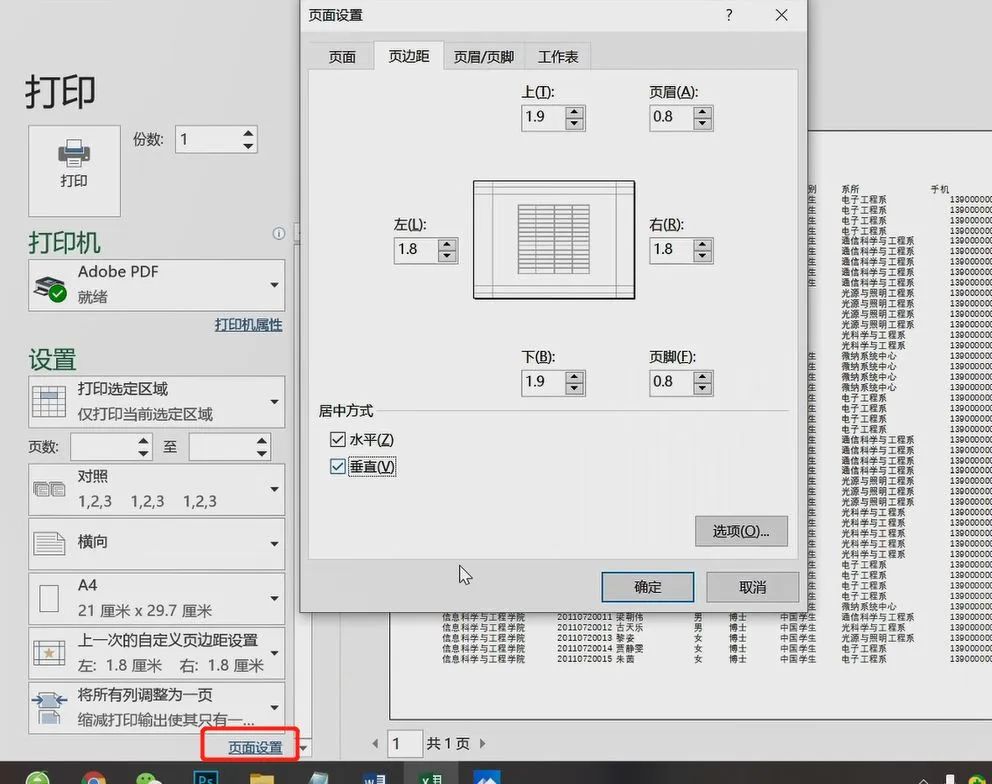
水平、垂直居中:在页面设置中,页边距选择水平和垂直居中,可以自动调整页边距让表格位置居中:

Ctr+E12一种基于现有数据的快速自动填写方式,快捷键Ctrl+E。会识别你输入的格式,并模仿填写:
分列13刚才提到的ctrl+E的快捷键虽然好用,但是自动识别的时候会有时候与我们的预期并不相同。例如这里软件自动输入的就是“北区学生公寓”,而非“北区”:
所以我们需要对原有单元格进行一些拆分。数据中有一个“分列”的选择,可以选择根据固定的长度或者分隔符区分。“数据”——“分列”。原有的数据就可以被拆分为所需的信息:
按照选定的长度分列:
按照分隔符分列:
制作下拉菜单14方法一:数据验证——序列——选择数据来源的单元格:
方法二:或者我们手动输入,数据验证——序列——“来源”处手动输入,用半角的逗号“,”隔开:
获取数据15数据——获取数据——自文件——从文件夹——浏览并选中我们要的文件夹路径。选择“合并并加载到”,表头相同的多个表格会自动合成一个:
定位、填充、选择性粘贴16选中需要处理的列,按F5出现定位的选择:
定位条件选择空值,这样所有的空值就被选中了:
选择第一个空值,输入等于的单元格,然后用Ctrl+Enter自动填充:
但是需要注意的是,这些单元格中的新值是通过“=”等于某个单元格获得的,一旦移动就会改变,所以我们需要通过选择性粘贴改变这些值。选中这些单元格,复制,然后右键粘贴选择“选择性粘贴”-“值”:
Vlookup函数17公式选项插入函数——选择Vlookup:
函数需要输入四个参数第一行是用来查找的数据,当前的表格和作为数据查找目标的表格里面都要有这一项第二行是在什么范围内查找,同时需要注意的是,被查找的数据需要位于作为数据查找目标表格的第一列第三行是返回值,表示最后得到的数据与被查找数据的位置关系(这就是为什么需要将被查找的数据放在第一列的原因)
第四行,确定是精确匹配还是模糊匹配,这里选择false(精确匹配):
关于Vlookup函数有两个常见问题1.需要把数据来源固定下来,“绝对的引用”因为我们输入函数的时候是在一个单元格中操作的,后面的单元格按照这个格式自动填充的时候相对应的数值自动改变了,导致查找的范围产生变化,所以需要固定我们选择的范围。
方法是在选中的行列前标上“$”的符号:
2.单元格的格式需要注意我们前面提过,“文本”格式代表这个单元格输入的内容直接显示出来如果单元格的格式是“文本”,公式就不起作用,可以把格式改为“常规”Word重复顶端标题行01在Word里的表格中我们也可以做到和Excel一样,每一页自动出现标题行。
操作是:选中需要重复的表格标题行——表格工具——重复标题行:
快速制作邮件列表02当我们复制粘贴一些邮箱的地址时,自动得到的一行行邮箱是用换行来分开的,这样我们不方便直接粘贴进电子邮箱的发送地址栏,可以使用替换功能将换行符替代为半角的分号“;”,用通用配置符号“^p”代表回车
,就可以使用替换功能了:
快速插入签名的电子版03插入手写的签名图片——图片工具裁剪图片调整大小——颜色选项卡设置透明色——右键选择图片环绕文字:浮于文字上方——移动到需要签章的位置:
自动生成目录04为标题选择word自带的样式(比如“标题1”)——插入页码——在“引用”中选择“目录”就会自动生成了。使用“布局”中的“分页符”可以将目录页单独成页:
这时候我们可以重新设置一下正文的页码。选择“页码”中的“设置页码格式”,选择起始页从“1”重新开始:
右键点击做好的目录,“更新域”,新的页码就能重新标好了。通过上面的这些操作,就可以让目录和正文的页码分别排序:
邮件合并05我们可以对统一的格式进行批量处理,比如一些固定格式文件的填写,格式邮件的回复等邮件——邮件合并——邮件合并分步向导——类型选择:信函——下一步:开始文档——使用当前文档——下一步:选择收件人——使用现有列表,浏览选中需要使用的数据——下一步:撰写信函——插入合并域中选择表格中的对应列——预览结果处可以查看效果——完成并合并,编辑当前文档:。
选择信函格式:
使用当前文档为模板:
浏览文档,选择填写的数据来源:
然后选中需要被替换的内容,点击“插入合并域”,确定使用数据来源中的哪一项数据作为填写来源:
所有的需要填写的内容都对应完毕后,我们就可以预览了。如果没有问题,就可完成合并,将自动生成:
注:文中的数据内容纯属虚构,如有雷同,纯属巧合!: )(转载自微信公众号“卿云歌”)
亲爱的读者们,感谢您花时间阅读本文。如果您对本文有任何疑问或建议,请随时联系我。我非常乐意与您交流。



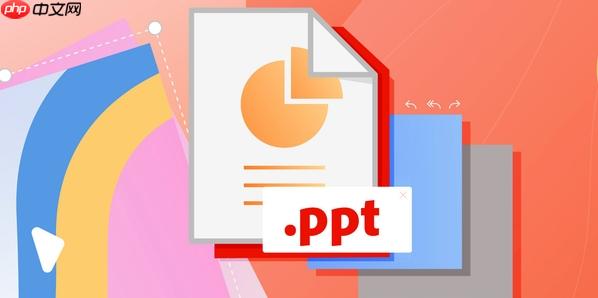
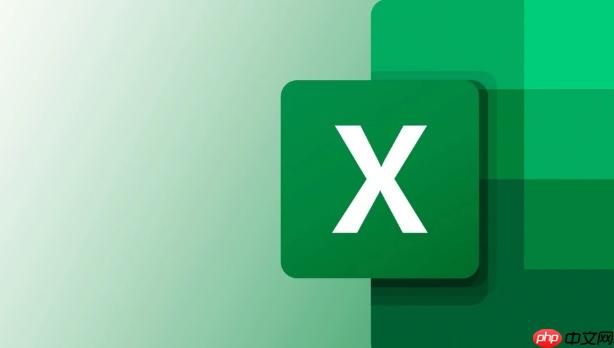


发表评论:
◎欢迎参与讨论,请在这里发表您的看法、交流您的观点。